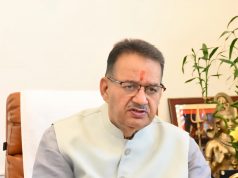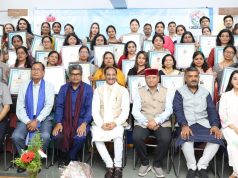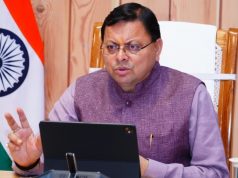SDC Foundation releases Report on Char Dham Yatra 2024
By Arun Pratap Singh
Dehradun, 26 Dec: Social Development for Communities (SDC) Foundation, an organisation focused on climate change, environment, urbanisation, and waste management in Uttarakhand, today released a report on the Char Dham Yatra 2024, titled Pathways to Pilgrimage: Data Insights, Challenges, and Opportunities. The report was launched during a press conference held at the Press Club, here, today. While releasing the report, Anoop Nautiyal, the founder of SDC Foundation, highlighted the key insights presented in the 66-page detailed report. The report underscores 10 major findings from the Yatra and provides new assessments regarding the annual pilgrimage. Nautiyal also shared that the report also makes 10 key recommendations to the government on the management of the Char Dham Yatra.
During the press conference, Nautiyal welcomed the government decision to constitute a Char Dham Yatra Authority but also stressed that instead of focussing on creating records in terms of the number of pilgrims visiting the Char Dham each year, it must focus on ensuring a safe and sustainable Yatra. He also lamented the fact that the government has to be pressurised to conduct carrying capacity of various cities and towns, particularly in the hills. He said that, while the government has, in response to the directions of NGT and the courts, been speaking about identifying the carrying capacity of various places, not much progress has been made in this regard. It is only now that Wildlife Institute of India (WII) has been assigned the task of conducting the study.
Nautiyal shared that the report includes data on the number of pilgrims visiting each of the four shrines over the 192 days, as well as 14 key graphs highlighting significant trends. The report also features a special analysis of media documentation and provides recommendations on simplifying the registration process for pilgrims.
He shared that the report has made 10 major assessments based on the data collected during the Yatra. He reminded that 41 percent of pilgrims completed the Char Dham Yatra within the first 30 days from 10 May to 8 June, while the remaining 59 percent visited the four shrines over the next five months. The report presents week by week data sourced from the media as well as the government data. He reminded that, post the landslide that occurred on 31 July in Kedar Valley, not a single pilgrim visited Kedar Dham for the next ten days till 10 August. During the month of August, only 7,418 pilgrims visited Kedarnath, with a significant dip in numbers during the first half of the month.
The report also mentions that the second week of the pilgrimage, from 17 May to 23 May, was the busiest. During this one week of the 28-week long Yatra, a total of 5,63,292 pilgrims visited the Char Dham, accounting for 12 percent of the total pilgrims for the entire Yatra.
The report outlines several challenges that have arisen as the Char Dham Yatra has expanded in recent years. It highlights issues such as overcrowding, safety concerns, and environmental degradation along the Yatra routes.
Nautiyal stated that the report has made 10 Key Recommendations for Safe and Sustainable Yatra Management. They include focusing on sustainable management rather than just celebrating record numbers and carefully paying attention to the carrying capacity of the shrines. The report highlights the need for enhancing disaster management preparations, especially during road closures and for simplifying the registration process for pilgrims. The report also calls upon the government to improve healthcare facilities on Yatra routes and explore opportunities for revenue enhancement. It further recommends the need for extensive stakeholder consultation and establishment of a Yatra Authority. It concludes the set of recommendations with inputs regarding the winter Char Dham Yatra and protecting the interests of local communities.
Anoop Nautiyal stressed that the state government must take immediate steps to build resilience into the Yatra’s infrastructure and planning. He also expressed gratitude to the National Green Tribunal (NGT) for instructing the state government to conduct a Carrying Capacity Study of the Char Dham shrines.
He said that the report also suggests ways for simplifying the registration process for pilgrims. He felt that the current registration system is so complicated that not only ordinary pilgrims but even computer experts face difficulties. Nautiyal also shared that 10 key concerns regarding the Yatra have also been identified in the report, including mismanagement during the Yatra, overcrowding and exceeding carrying capacity, problems faced by pilgrims due to traffic jams, pilgrim protests due to issues with registration, operation of helicopter services without adequate rescue management, carrying capacity in high Himalayan regions and waste management issues
The press conference was attended by Praveen Upreti and Diya Jain of the SDC Foundation. Special thanks were extended to Naveen Mohan for his work on the registration feature and to Rishabh Srivastava for preparing the report.








